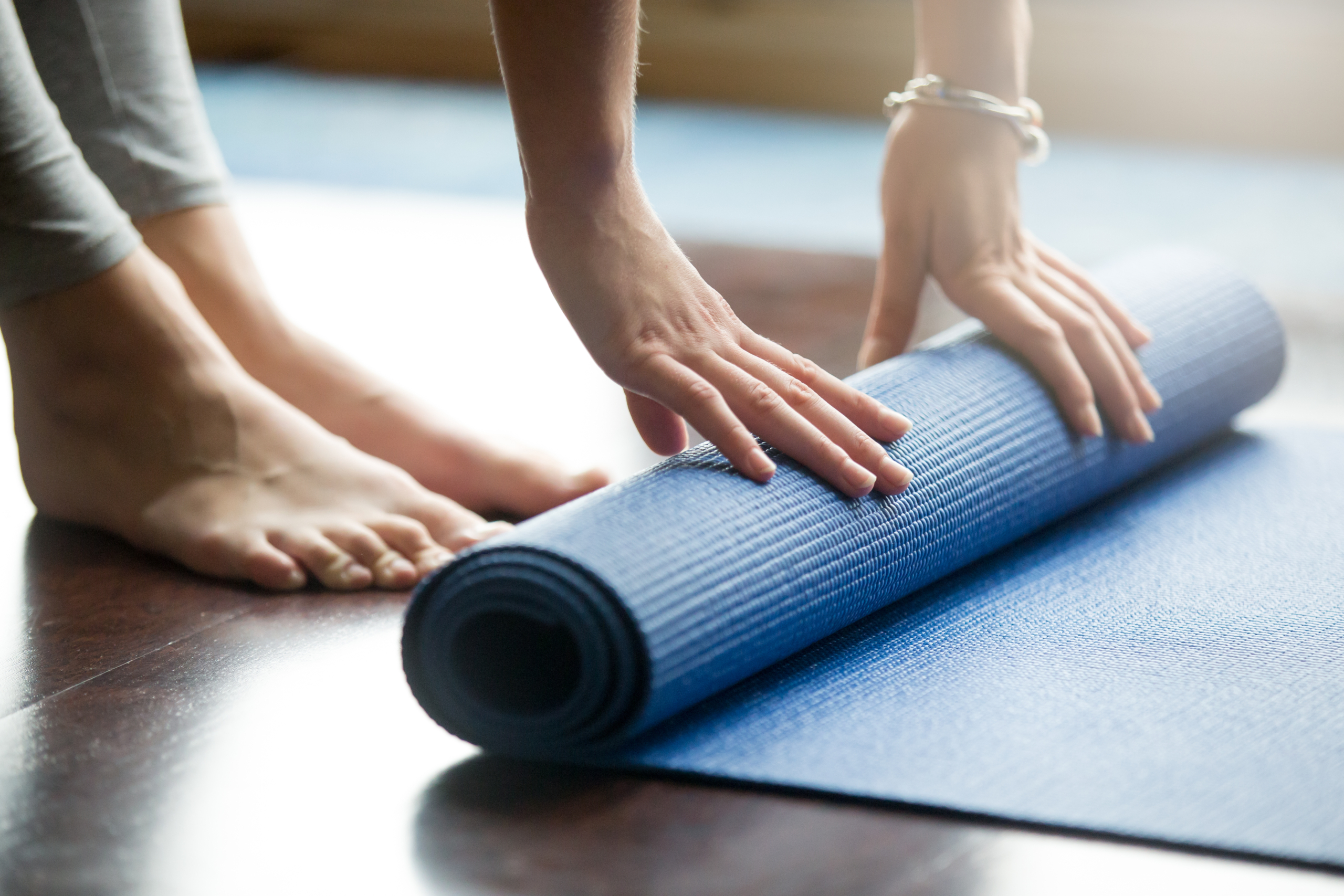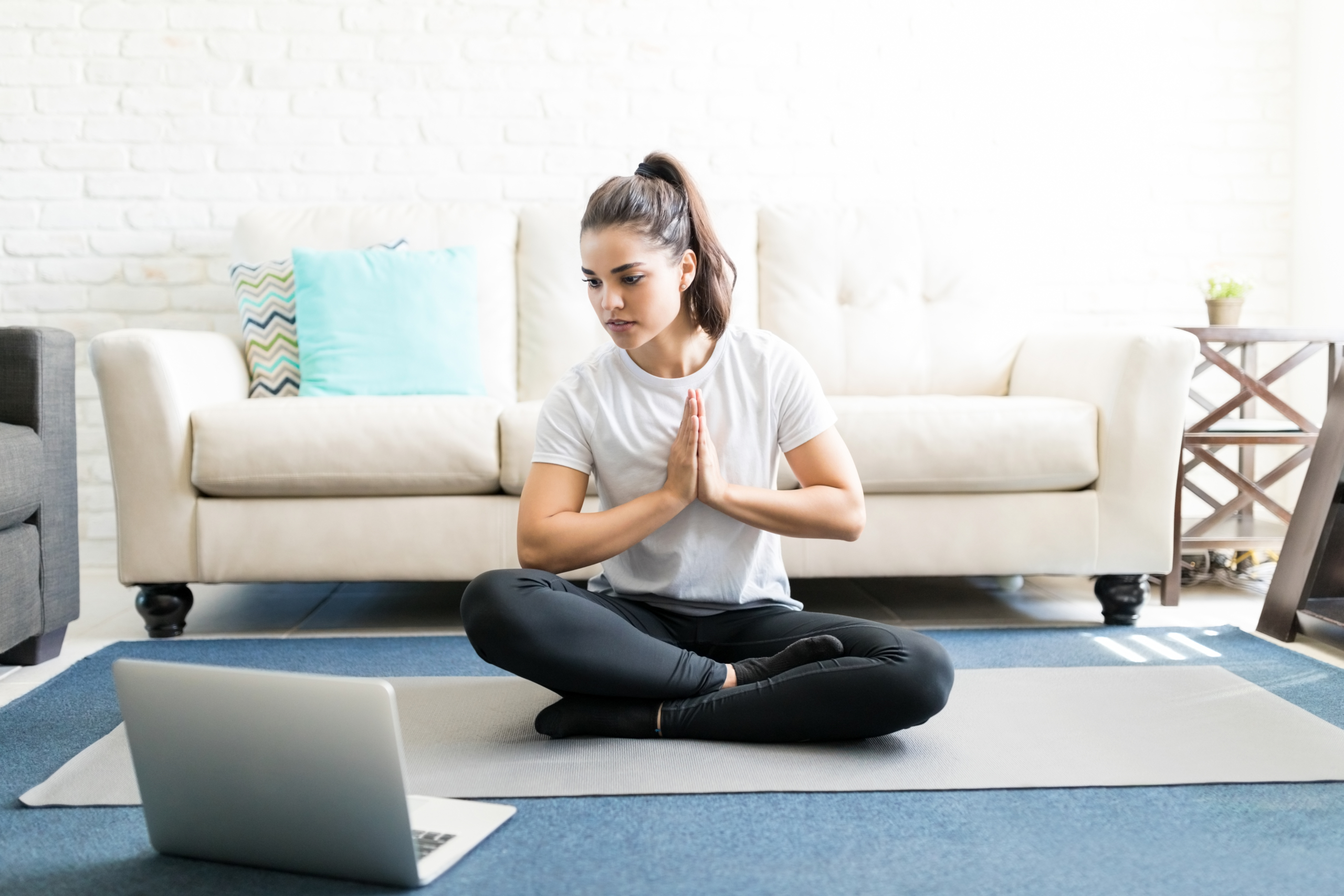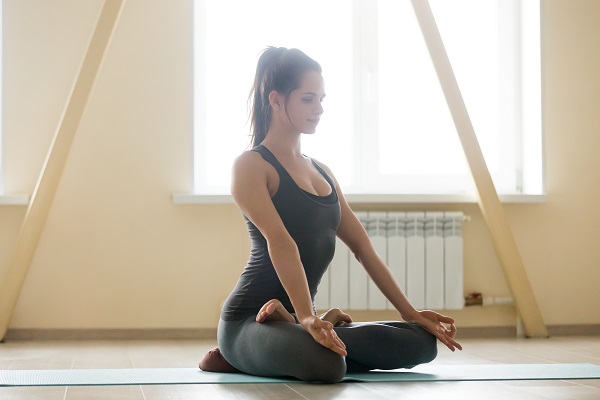How-To Care for Your Yoga Mat to Extend Its Lifespan
Have you ever wondered why some yoga mats seem to last forever whilst others fall apart after just a few months? Are you tired of replacing your mat every year because it’s become slippery, smelly, or simply worn out? What if I told you that with proper care, your yoga mat could serve you faithfully for years to come?
Looking after your yoga mat isn’t just about keeping it clean—it’s about preserving your investment and maintaining a hygienic practice space. Whether you’ve splashed out on a premium Manduka mat or picked up a budget-friendly option, proper care can dramatically extend its lifespan. This guide will walk you through everything you need to know about mat maintenance, from daily cleaning routines to troubleshooting common problems.

Yoga Mat
Understanding Your Yoga Mat: Materials and Care Requirements-
Not all yoga mats are created equal, and understanding what your mat is made of is the first step towards proper care. Different materials require different cleaning methods and maintenance approaches. Let’s explore the most common mat materials and what makes each one unique.
The material of your mat determines everything from how often you should clean it to which products you can safely use. Using the wrong cleaning method can damage your mat’s surface, reduce its grip, or even cause it to break down prematurely. That’s why it’s vital to know exactly what you’re working with.
Before we look at specific cleaning techniques, let’s examine the characteristics of each mat type. This knowledge will help you make informed decisions about care and maintenance throughout your mat’s lifetime.
Natural Rubber Mats
Natural rubber mats are beloved by yogis for their excellent grip and eco-friendly credentials. These mats are made from tree sap and offer superior cushioning and durability. However, they require gentle care to maintain their natural properties.
Rubber mats are naturally antimicrobial, which means they resist bacteria growth better than synthetic alternatives. They do tend to have a distinctive smell when new, but this fades with time and proper airing. These mats are also biodegradable, making them an environmentally conscious choice.
When caring for rubber mats, avoid harsh chemicals and excessive heat. They’re sensitive to oils and can break down if exposed to certain cleaning products. Stick to mild, natural cleaners and always allow them to dry completely before rolling up.
PVC and TPE Mats
PVC (polyvinyl chloride) mats are the most common and affordable option on the market. They’re durable, easy to clean, and come in countless colours and designs. TPE (thermoplastic elastomer) mats offer similar benefits but are more eco-friendly than traditional PVC.
These synthetic mats are incredibly resilient and can handle more aggressive cleaning methods than natural materials. They’re also closed-cell, which means they don’t absorb moisture as readily as open-cell mats. This makes them ideal for hot yoga or particularly sweaty practices.
The downside is that synthetic mats can become slippery when wet and may contain chemicals some yogis prefer to avoid. Regular cleaning is essential to maintain their grip, and they benefit from occasional deep cleaning to remove built-up oils and residue.
Cork and Jute Mats
Cork and jute mats represent the natural, sustainable end of the spectrum. Cork mats are naturally antimicrobial and actually improve in grip when slightly damp. Jute mats offer a textured surface that provides excellent traction for standing poses.
These materials require special care because they’re more delicate than rubber or synthetic options. Cork can dry out and crack if not properly maintained, whilst jute can become rough or start to shed fibres with improper handling. Both materials benefit from gentle, natural cleaning methods.
The unique properties of these mats mean they often self-clean to some extent. Cork’s natural antimicrobial properties help prevent odour and bacteria growth, whilst jute’s rough texture naturally exfoliates dead skin cells during practice.

Yoga Mat
How Different Materials Affect Cleaning Methods-
Understanding your mat’s material is crucial because it directly impacts which cleaning products and techniques you can safely use. Natural materials generally require gentler treatment, whilst synthetic mats can handle more robust cleaning methods.
Open-cell mats (like some natural rubber varieties) absorb moisture and sweat, requiring more frequent deep cleaning and longer drying times. Closed-cell mats repel moisture but need regular surface cleaning to maintain grip. Each type has its pros and cons when it comes to maintenance.
The frequency of cleaning also varies by material. Natural rubber and cork mats might need less frequent deep cleaning due to their antimicrobial properties, whilst PVC mats benefit from more regular maintenance to prevent slipping. Always check manufacturer guidelines for your specific mat.
How to Wash Your Yoga Mat: The Complete Guide-
Keeping your mat clean doesn’t have to be complicated or time-consuming. With the right approach, you can maintain a hygienic practice surface without damaging your mat or spending hours on maintenance. Let’s break down the cleaning process into manageable steps.
The key to effective mat care is establishing a routine that works with your practice schedule. Whether you practice daily or just once a week, having a consistent cleaning routine will keep your mat fresh and extend its lifespan significantly.
Remember, a clean mat isn’t just about aesthetics or longevity—it’s about your health too. Regular cleaning prevents the build-up of bacteria, fungi, and unpleasant odours that can develop on a neglected mat.
Daily Cleaning Routine
Your daily cleaning routine should be quick and effortless, something you can do immediately after each practice. Start by wiping down your mat with a damp microfibre cloth to remove surface sweat and dirt. This simple step prevents build-up and keeps your mat fresh between deep cleans.
For a slightly more thorough daily clean, create a simple spray solution using water and a few drops of essential oil (tea tree or lavender work brilliantly). Spray lightly over the mat’s surface and wipe with a clean cloth. Always ensure your mat is completely dry before rolling it up.
Some yogis prefer to use antibacterial wipes designed specifically for yoga mats. These are convenient but check they’re compatible with your mat material first. Natural rubber mats can be damaged by certain chemicals found in commercial wipes.
Deep Cleaning Methods
Deep cleaning should happen every few weeks or monthly, depending on how often you practice. Fill your bathtub with cool water and add a small amount of mild detergent or specialised mat cleaner. Submerge your mat and gently scrub with a soft cloth or sponge.
For mats that shouldn’t be fully submerged (check manufacturer guidelines), lay the mat flat and clean one side at a time. Use a solution of water and mild soap, working in sections to ensure thorough coverage. Pay special attention to areas where your hands and feet typically land.
After cleaning, rinse thoroughly with clean water to remove all soap residue. Soap left on the mat can make it slippery and may cause skin irritation. Take your time with this step—proper rinsing is just as important as the cleaning itself.
Natural vs Commercial Cleaning Solutions
Natural cleaning solutions are often the safest choice for all mat types. A mixture of water and white vinegar (1:3 ratio) creates an effective, antimicrobial cleaner that won’t damage your mat. Add a few drops of essential oil for a pleasant scent and additional antibacterial properties.
Commercial mat cleaners are formulated specifically for yoga mats and often contain ingredients that help maintain grip whilst cleaning. They’re convenient and usually safe for all mat types, but they can be pricey. Always check that commercial cleaners are suitable for your specific mat material.
DIY options like baking soda paste work well for stubborn stains or odours. Mix baking soda with a small amount of water to create a paste, apply to problem areas, let sit for a few minutes, then scrub gently and rinse thoroughly. This method is particularly effective for removing ground-in dirt.
How Often Should You Clean Your Mat?
The frequency of cleaning depends on several factors: how often you practice, how much you sweat, and whether you use a mat towel. As a rule, wipe down your mat after every use and deep clean monthly. Hot yoga practitioners might need to clean more frequently.
If you practice less than three times a week, you might get away with deep cleaning every 6-8 weeks. However, always clean your mat if it starts to smell, feel sticky, or show visible dirt. Trust your senses—if something seems off, it’s time for a clean.
Consider your practice environment too. Outdoor yoga requires more frequent cleaning due to exposure to dirt and debris. Similarly, if you share your mat or use studio mats, increase your cleaning frequency to maintain hygiene.



Leave a Reply
Want to join the discussion?Feel free to contribute!